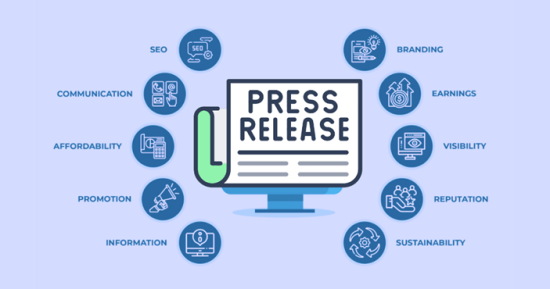
Have you ever wondered what makes a paragraph captivating from the very beginning? How can you ensure that your readers are instantly engaged and eager to continue reading? Starting a paragraph effectively is the key to enhancing the flow and clarity of your writing. It sets the tone for your entire piece and lays the foundation for a compelling narrative.
Picture this: You’re reading an article, and the first few sentences fail to grab your attention. Your interest wanes, and you find it difficult to stay engaged. But when a paragraph starts with a bang, using strategic linking words and crafting an engaging topic sentence, you are immediately drawn in, eager to discover what lies ahead.
Starting a paragraph is an art, and we are here to demystify the process for you. In this comprehensive guide, we will explore the essential techniques and strategies to kickstart your paragraphs with impact. Whether you are a seasoned writer looking for a fresh perspective or a beginner eager to master the craft, this guide is designed to provide you with actionable tips and insights to elevate your writing to new heights.
Are you ready to unlock the secrets of captivating paragraph beginnings? Let’s dive in and discover how to start a paragraph like a pro!
Understanding Paragraph Structure for Clarity in Writing
When it comes to writing letter, article anything, paragraph structure plays a vital role in conveying your ideas effectively. A well-structured paragraph not only enhances the clarity of your writing but also improves the coherence and logical flow of your thoughts. By understanding the key elements of a well-constructed paragraph, such as the topic sentence, supporting details, and concluding sentence, you can ensure that your writing is cohesive and engaging.
A clear and concise topic sentence is the foundation of a well-structured paragraph. It introduces the main idea or focus of the paragraph and sets the tone for the rest of the content. To achieve clarity, ensure that your topic sentence is specific and to the point. Avoid vague or ambiguous statements that may confuse the reader.
Supporting details are essential for providing evidence and examples that back up your main idea. These details help to strengthen your argument and provide a deeper understanding of the topic. When including supporting details, make sure they are relevant, credible, and concise. Organize them in a logical order that flows seamlessly from one point to another.
In order to achieve writing clarity and maintain a coherent flow, it is essential to pay attention to paragraph structure. By crafting well-structured paragraphs with clear topic sentences, relevant supporting details, and effective concluding sentences, you can enhance the overall quality of your writing. Remember, a well-structured paragraph is like a building block that contributes to the success of your entire piece.
How to Start a Paragraph: Employing Strategic Linking Words
In order to create coherent and well-structured paragraphs, it is crucial to employ strategic linking words and phrases. These effective transitions enable smooth transitions between ideas and facilitate the flow of the text. By using paragraph transitions strategically, you can guide your readers seamlessly through your writing, enhancing their understanding and engagement.

Signposts: Guiding Your Reader Through the Text
Signposts serve as guiding posts that lead your readers through your text. These paragraph transitions act as roadmaps, indicating the direction and flow of your writing. They can be used at the beginning or end of paragraphs to signal shifts in ideas, introduce new concepts, or summarize previous information. Examples of signposts include phrases like “On the other hand,” “In conclusion,” or “Moreover,” which effectively connect and guide your reader from one point to the next.
Crafting Smooth Transitions Between Ideas
Linking ideas and crafting smooth transitions are essential for maintaining coherence and fluidity in writing. When moving from one idea to the next, it is essential to use strategic linking words and phrases that effectively connect paragraphs. Examples of these transitions include words like “Furthermore,” “Additionally,” and “Similarly,” which establish connections between ideas and help your writing flow seamlessly.
Examples of Linking Words and Phrases
There is a wide range of linking words and phrases that can be used to connect paragraphs and ideas. Here are a few examples:
- Addition: Additionally, Furthermore, Moreover, In addition
- Contrast: However, On the other hand, Nevertheless, Conversely
- Illustration/Example: For instance, To illustrate, Specifically
- Comparison: Similarly, Likewise, In comparison, Compared to
- Conclusion/Summary: In conclusion, To sum up, Ultimately, Overall
These examples of linking words and phrases are effective tools for connecting paragraphs and ideas, maintaining flow and coherence in your writing.
The Art of Crafting an Engaging Topic Sentence
When it comes to writing compelling paragraphs, one of the key elements that can instantly captivate your reader is a well-crafted topic sentence. An engaging topic sentence not only introduces the main idea of the paragraph but also has the power to hook the reader and make them eager to read on.
The importance of a strong topic sentence cannot be overstated. It sets the tone for the entire paragraph and provides a roadmap for the reader to navigate through your writing. By using captivating and thought-provoking language, you can immediately grab their attention and motivate them to continue reading.
So, how do you create an engaging topic sentence? It starts with understanding the purpose of the paragraph and identifying the key message you want to convey. Think of it as the “hook” that will reel in your reader. Consider using a rhetorical question, surprising fact, or a vivid description to pique their curiosity.
For example, imagine you’re writing a paragraph about the benefits of regular exercise. Instead of starting with a generic statement like “Exercise is good for you,” you can craft a more engaging topic sentence like:
“Did you know that just 30 minutes of exercise a day can significantly improve your physical and mental well-being?”
This topic sentence not only presents a compelling question but also creates a sense of urgency and highlights the positive impact of exercise.
Another technique to make your topic sentence more engaging is to use sensory language that appeals to the reader’s emotions. By incorporating vibrant imagery or evoking specific sensations, you can hook the reader and immerse them in your writing. This approach allows them to form a personal connection with your topic and enhances their overall reading experience.
Remember, an engaging topic sentence is just the beginning. The rest of the paragraph should seamlessly build upon the main idea, providing supporting details and evidence to strengthen your argument. By practicing the art of crafting captivating paragraph beginnings, you can ensure that your writing grabs the reader’s attention from the very start and keeps them engaged throughout.

Improving Cohesion with Carefully Chosen Transitions
In order to create clear and coherent texts, improving cohesion is crucial. One effective way to achieve this is by using carefully chosen transitions throughout your writing. These transitions serve as bridges that connect ideas and maintain a logical flow in paragraphs and the overall text. By utilizing appropriate transitions, you can enhance the readability and understanding of your content.
Maintaining Logical Flow in Paragraphs
Logical flow within paragraphs is essential for maintaining consistency in your writing. Each paragraph should present ideas in a logical order, allowing the reader to follow your thoughts effortlessly. To achieve this, start each paragraph with a topic sentence that clearly introduces the main idea. Then, use transitions to smoothly guide the reader through the supporting details. Finally, conclude the paragraph with a sentence that links it back to the overall argument or theme of the text.
Conjunctions and Their Impact on Narrative Flow
Conjunctions play a significant role in enhancing narrative flow in your writing. These connecting words help establish relationships between ideas, creating a cohesive and coherent structure. By consciously incorporating conjunctions such as “however,” “therefore,” “in addition,” and “meanwhile,” you can make your writing more fluid and engaging. Utilize conjunctions strategically to ensure a seamless transition between sentences, paragraphs, and sections of your text.
Strategies for Writing Clear and Coherent Texts
When it comes to writing clear and coherent texts, employing certain strategies can significantly enhance your writing. First and foremost, focus on organizing your thoughts before you start writing. Create an outline or plan that outlines the main ideas and the logical progression of your text. Additionally, make use of effective transitions, such as “similarly,” “moreover,” and “consequently,” to connect your ideas and maintain coherence. Finally, carefully review and edit your work to eliminate any inconsistencies or unclear passages.
Incorporating Evidence to Support Your Statements
Incorporating evidence into your writing is crucial for supporting your statements and making your paragraphs more persuasive. By providing evidence, you can strengthen your arguments and lend credibility to your ideas. There are various types of evidence you can use, such as facts, statistics, examples, and quotes.
When incorporating evidence, it’s important to choose evidence that is relevant, reliable, and supports your main point. For example, if you’re writing a paragraph about the benefits of exercise, you might cite statistics from a reputable study or share personal anecdotes that demonstrate the positive impact of physical activity.
Integrating evidence into your paragraphs can be done in several ways. You can introduce evidence with phrases like “According to,” “For instance,” or “In a study conducted by.” This helps signal to your reader that you are presenting supporting evidence for your statements.
Additionally, it’s important to properly attribute the evidence you use. When quoting someone, make sure to include their name and the source of the quote. If you’re referencing data or statistics, include the source where you obtained the information.
By incorporating evidence into your writing, you provide a solid foundation for your arguments and give readers a reason to believe in what you’re saying. Remember to use evidence strategically, ensuring it directly supports your statements and adds credibility to your writing.
Writing with the Reader in Mind: Tone and Perspective
When it comes to creating engaging paragraphs, it’s essential to always keep your reader in mind. By adjusting the formality of your writing style, you can effectively connect with and engage your target audience. Whether you’re aiming for a more formal writing tone or a more informal and conversational approach, tailoring your tone and perspective can significantly impact how your readers connect with your content.
Adjusting the Formality of Your Writing Style
The level of formality you choose for your writing style depends on the nature of your content and the intended audience. If you’re writing for a professional setting or academic purposes, a more formal tone is appropriate. On the other hand, if you’re writing for a casual blog or an informal platform, adopting a conversational and friendly tone can better engage your readers.
Consider the context and purpose of your writing to determine how formal or informal your style should be. By adjusting the formality of your writing style, you can effectively connect with your target audience and establish credibility and authority in your content.
Utilizing the Second Person Point of View for Engagement
One powerful way to engage your readers is by utilizing the second person point of view. Addressing your audience directly with pronouns like “you” and “your” creates a personal connection, making readers feel involved and part of the conversation. This approach promotes a sense of belonging and keeps readers interested and invested in your content.
By speaking directly to your readers, you can encourage them to actively participate and relate to the message you’re conveying. This personal touch enhances the reader’s experience, effectively drawing them into the content and creating a stronger connection.
Ensuring Your Paragraphs Speak to the Target Audience

Speaking directly to your target audience is vital for effective communication. You want your paragraphs to resonate with your readers and address their unique needs and interests. Tailor your content by using language, examples, and references that are relevant to your specific audience.
Consider the demographics, interests, and preferences of your target audience when crafting your paragraphs. This level of customization ensures that your content is relatable and valuable to your readers. When your paragraphs speak directly to your target audience, they feel understood and connected, enhancing their overall reading experience.
By writing with the reader in mind, adjusting the formality, utilizing the second person point of view, and ensuring your paragraphs speak to the target audience, you can create engaging content that connects with your readers on a deeper level. Remember, engaging writing is all about establishing a strong bond with your audience and providing them with valuable insights and information.
Concluding Your Paragraphs with Purpose
When it comes to writing the conclusion of a paragraph, it is just as important as its beginning. A well-crafted conclusion can leave a lasting impression on the reader and provide a sense of closure to your ideas. By summarizing the main points of your paragraph, you ensure that your message is clear and impactful.
To conclude your paragraphs with purpose, consider using techniques such as restating your main idea in a concise and memorable way. This helps reinforce your argument and leaves a strong impression in the reader’s mind. Additionally, you can provide a call to action or suggest further avenues of exploration to encourage the reader’s engagement.
Consider this example: If you’re writing a persuasive essay on the importance of exercise, your conclusion could summarize the benefits of staying active, while also urging the reader to take small steps towards incorporating physical activity into their daily routine.
By crafting purposeful endings, you enhance the overall cohesiveness of your writing and reinforce the main ideas within your paragraphs. So, remember to give your conclusions the attention they deserve, as they can leave a powerful impact on your reader.
FAQs on How to Start a Paragraph
How can I engage readers at the beginning of a paragraph?
Engage readers by using a hook, such as an interesting fact, a provocative question, a relevant quote, or a vivid description that draws them into the topic.
Is it important to link the opening sentence to the previous paragraph?
Yes, it’s important to create a smooth transition by linking the opening sentence to the previous paragraph, ensuring coherence and flow within the text.
How to start a paragraph about yourself?
To start a paragraph about yourself, begin with a clear and engaging sentence that highlights a key aspect of your identity or experience. For example, “As an avid traveler, I’ve explored over 20 countries, each journey broadening my perspective on life and cultures.








